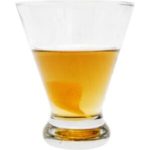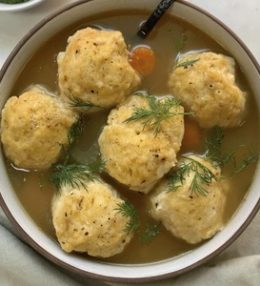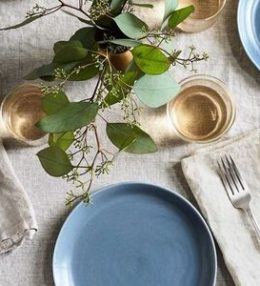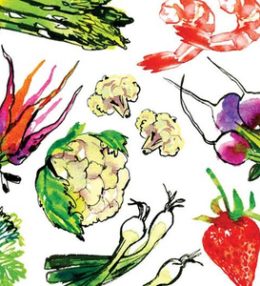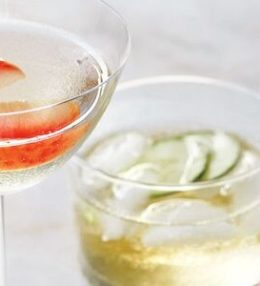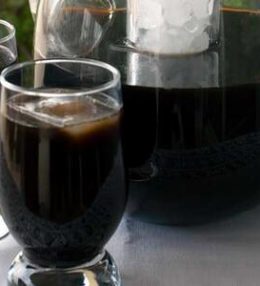
Port doesn’t get enough play as a cocktail ingredient. This fortified wine from Portugal resides in the mixological shadow of other wines such as vermouth and sherry, but when deployed in the right drink, port can express its rich, deep character in a very satisfying way.
The Princeton Cocktail dates to the late 19th century, when New York barman George Kappeler mixed them alongside other Ivy League-named drinks at the Holland House bar. Heavy and rich, port lends not only flavor to this drink, but an elegant appearance: when poured into the cocktail glass with a steady hand, the port will settle on the bottom, creating a two-tone visual effect without all the fussy effort of a pousse café-style layered drink (and it helps the layering and the flavor if you chill the port in advance).
The Princeton is best made with a type of gin called Old Tom, which was impossible to find until just a couple of years ago. There are now two brands of Old Tom on the market domestically: Hayman’s, which is relatively easy to find in well-stocked liquor stores and online shops; and Ransom, made in Oregon and with a much more limited distribution (but can also be found online). If you can’t find Old Tom or don’t want to trouble with buying one more style of gin, you can still give the Princeton a try by using a savory dry gin such as Plymouth, and adding a little simple syrup to approximate the sweetness of Old Tom.
Princeton Cocktail
-
2 ounces Old Tom gin (or Plymouth gin plus 1/2 teaspoon simple syrup)
-
2 dashes orange bitters
-
3/4 ounce ruby or tawny port (preferably chilled)
-
Combine gin (and simply syrup, if using) and bitters in a mixing glass and fill with ice. Stir well for 20 seconds and strain into a chilled cocktail glass. Gently pour the port down the inside of the cocktail glass, allowing it to slide down the side and settle in the bottom of the drink. Twist a piece of orange or lemon peel over the drink, but don’t drop it in, as that will ruin the visual effect.
| Nutrition Facts (per serving) | |
|---|---|
| 143 | Calories |
| 0g | Fat |
| 1g | Carbs |
| 0g | Protein |
Show Full Nutrition Label
×
| Nutrition Facts | |
|---|---|
| Servings: 1 | |
| Amount per serving | |
| Calories | 143 |
| % Daily Value* | |
| 0g | 0% |
| Saturated Fat 0g | 0% |
| 0mg | 0% |
| 137mg | 6% |
| 1g | 1% |
| Dietary Fiber 0g | 0% |
| Total Sugars 0g | |
| 0g | |
| Vitamin C 0mg | 0% |
| Calcium 2mg | 0% |
| Iron 0mg | 1% |
| Potassium 20mg | 0% |
| *The % Daily Value (DV) tells you how much a nutrient in a food serving contributes to a daily diet. 2,000 calories a day is used for general nutrition advice. | |
(Nutrition information is calculated using an ingredient database and should be considered an estimate.)
Port doesn’t get enough play as a cocktail ingredient. This fortified wine from Portugal resides in the mixological shadow of other wines such as vermouth and sherry, but when deployed in the right drink, port can express its rich, deep character in a very satisfying way. The Princeton Cocktail dates to the late 19th century, when New York barman George Kappeler mixed them alongside other Ivy League-named drinks at the Holland House bar. Heavy and rich, port lends not only flavor to this drink, but an elegant appearance: when poured into the cocktail glass with a steady hand, the port will settle on the bottom, creating a two-tone visual effect without all the fussy effort of a pousse café-style layered drink (and it helps the layering and the flavor if you chill the port in advance). The Princeton is best made with a type of gin called Old Tom, which was impossible to find until just a couple of years ago. There are now two brands of Old Tom on the market domestically: Hayman’s, which is relatively easy to find in well-stocked liquor stores and online shops; and Ransom, made in Oregon and with a much more limited distribution (but can also be found online). If you can’t find Old Tom or don’t want to trouble with buying one more style of gin, you can still give the Princeton a try by using a savory dry gin such as Plymouth, and adding a little simple syrup to approximate the sweetness of Old Tom. Princeton Cocktail 2 ounces Old Tom gin (or Plymouth gin plus 1/2 teaspoon simple syrup) 2 dashes orange bitters 3/4 ounce ruby or tawny port (preferably chilled) Combine gin (and simply syrup, if using) and bitters in a mixing glass and fill with ice. Stir well for 20 seconds and strain into a chilled cocktail glass. Gently pour the port down the inside of the cocktail glass, allowing it to slide down the side and settle in the bottom of the drink. Twist a piece of orange or lemon peel over the drink, but don’t drop it in, as that will ruin the visual effect. Nutrition Facts (per serving) 143 Calories 0g Fat 1g Carbs 0g Protein Show Full Nutrition Label × Nutrition Facts Servings: 1 Amount per serving Calories 143 % Daily Value* 0g 0% Saturated Fat 0g 0% 0mg 0% 137mg 6% 1g 1% Dietary Fiber 0g 0% Total Sugars 0g 0g Vitamin C 0mg 0% Calcium 2mg 0% Iron 0mg 1% Potassium 20mg 0% *The % Daily Value (DV) tells you how much a nutrient in a food serving contributes to a daily diet. 2,000 calories a day is used for general nutrition advice. (Nutrition information is calculated using an ingredient database and should be considered an estimate.)
Princeton Cocktail Recipe




